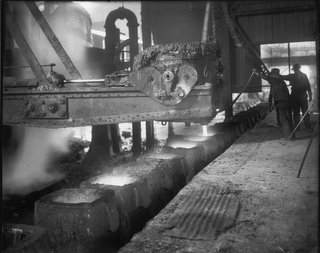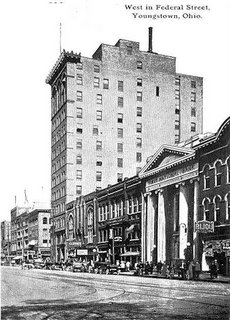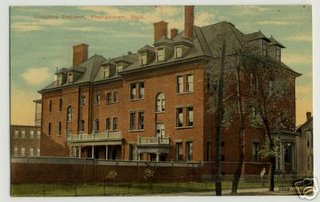
In November 1900, a group of 55 Youngstown citizens, led by James A. Campbell, raised $600,000 in capital to create the Youngstown Iron Sheet and Tube Company. Land was purchased along the Mahoning River approximately three miles east of downtown. In 1902, the mill opened for production.
Spectacular growth marked the company's second decade, some of it spurred by the demand for steel caused by World War I. In 1923, YS&T purchased the Brier Hill Steel Company of Youngstown and the Steel and Tube Company of America of East Chicago. During the 1930s the company survived the Great Depression and the 1937 "Little Steel" strike to emerge as a leading steel producer. In the 1960s, YS&T began to experience a decline. The company merged with the Lykes Corporation in 1969 and LTV Corporation in 1979, at which time all Youngstown operations were phased out.

Youngstown Sheet and Tube workers pouring steel into molds (circa 1915).







